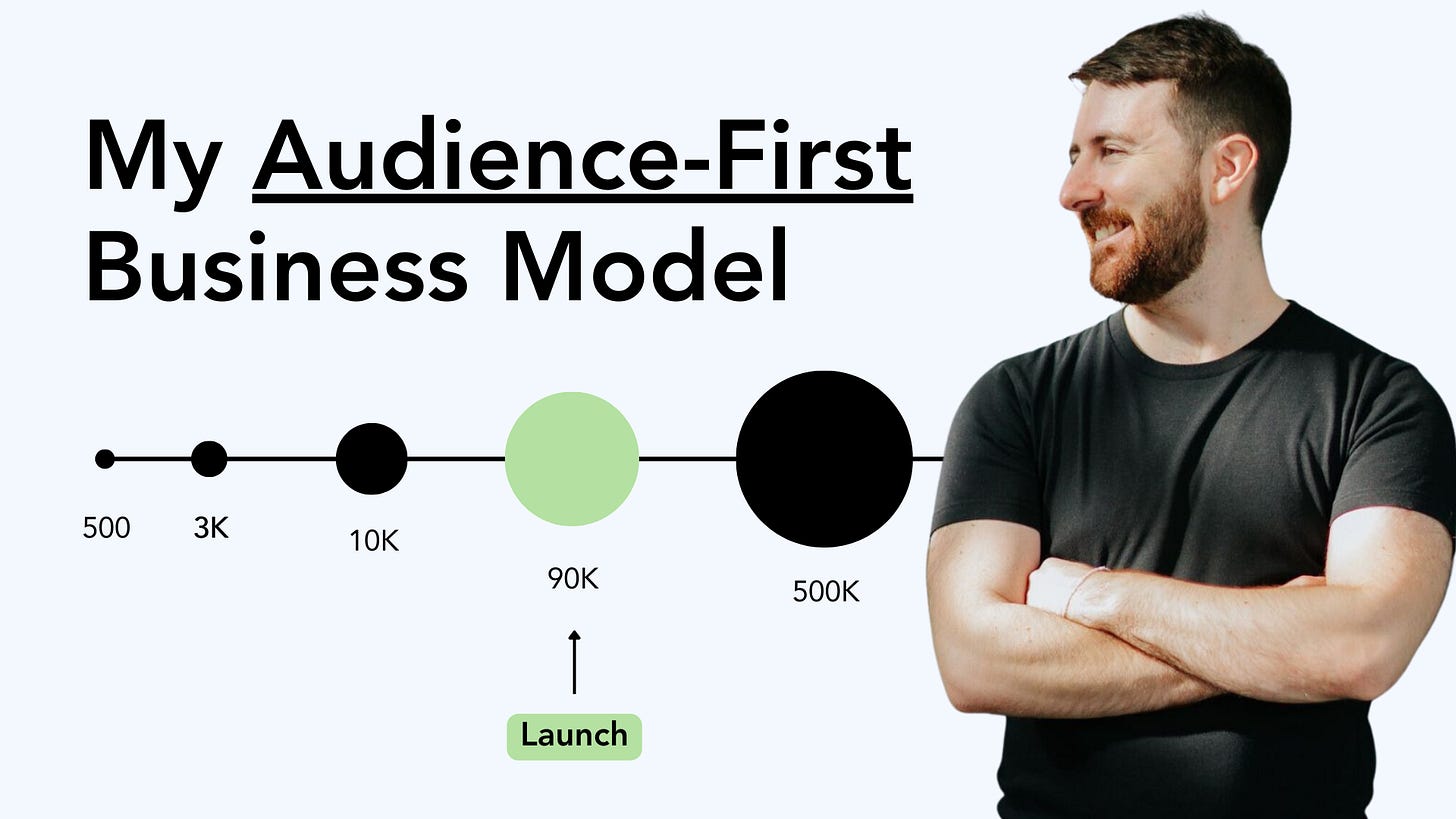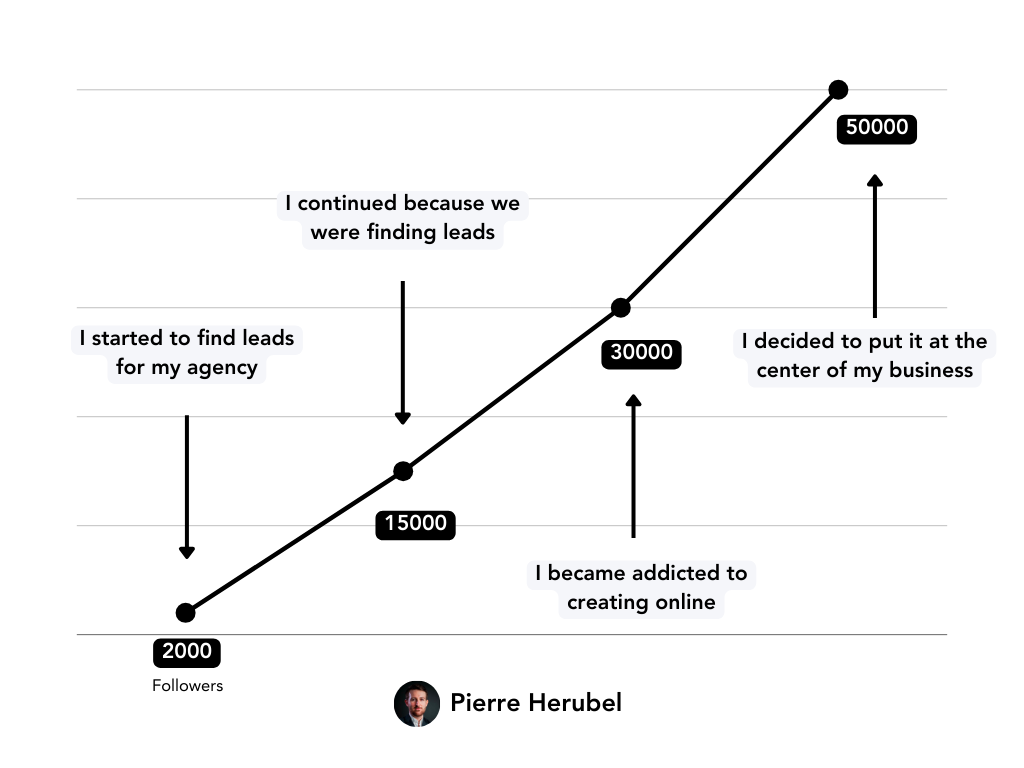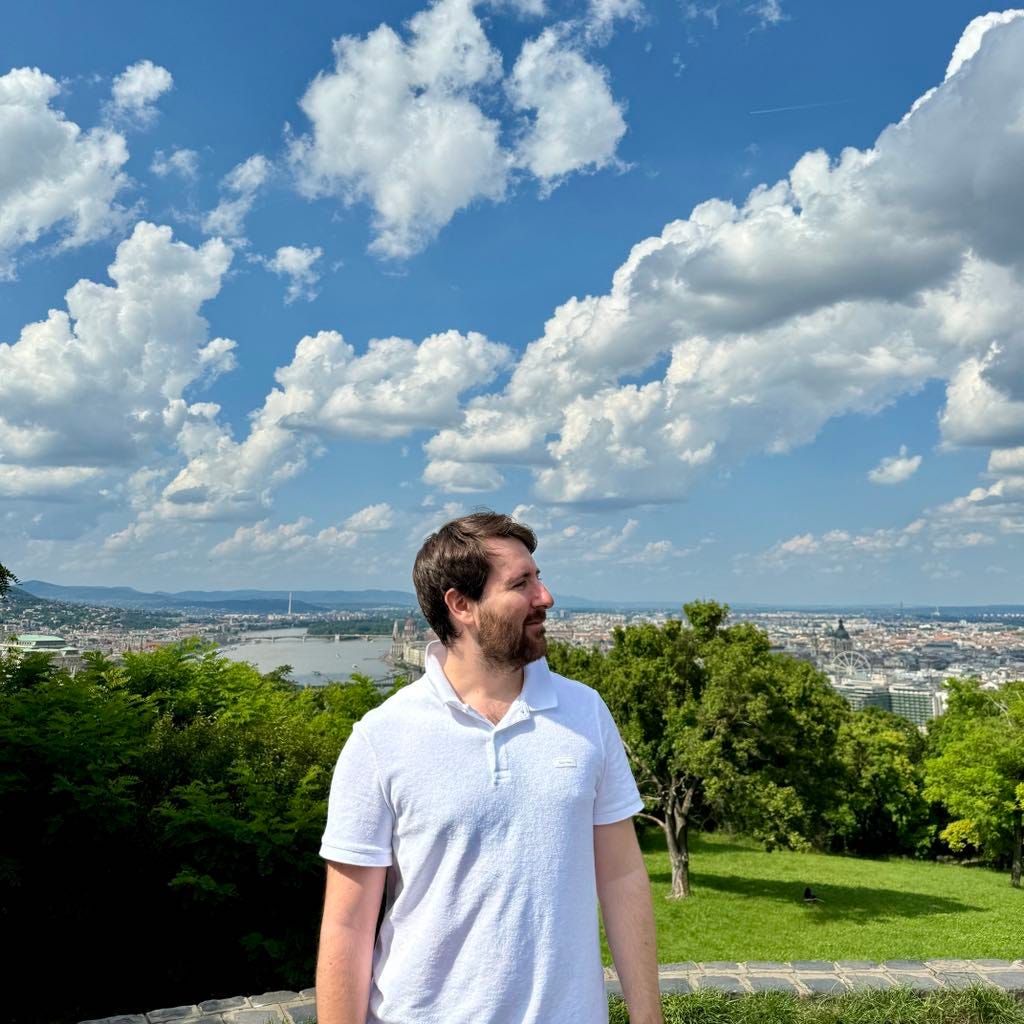My Audience-First Business Model
the best business model in 2024?
👋 Hello welcome
I’m building an audience-first business model. What does it mean?
I started by creating an audience (originally from Linkedin)
Then, I analyzed the pains of my audience
In order to create a portfolio of offers
In this newsletter, I’m going to explain how I’m doing it.
The reason why I started an audience-first business
How I went from Service to Product
My portfolio of offers
My next steps
First of all, here is a quick visualization of what is an audience-first business model:
The reason why I started an audience-first business
My previous business (go to market agency) was very labour intensive. We were working a lot on client delivery with a full time team and a community of freelancers. While I liked (and mastered) the business model (service), it was tiring to spend most of the time on management (people, clients, processes) rather than doing actual work.
I wanted to choose a model with more asymmetric value:
For example, an SEO article has asymmetric value. You take 6 hours to write and publish it once. But done well, it produces revenue during 3 years. The output (revenue) is radically higher than the input.
I started publishing content on January 2022 to find leads for the agency. And after we sold it in September 2023, I was really addicted to writing and posting content. I had a follower base of almost 50,000 people so I kept going.
But then I realized the power of this asset as people from everywhere in the world told me “I saw your infographics in our slack” or “I showed your concept on stage in Austin”. So I decided to put it at the center of my business and double down on the audience-first business model.
You can also ask yourself:
To answer, it really depends on:
What you are doing now (can you afford to launch later?)
Your ambition (do you want to do a big launch at 10K or 100K?)
The size of audience you want (you can make $1M with 3000-10000 followers)
Key Takeaway: I started to find leads for my agency, but I continued because I witnessed the power of the audience-first approach. It’s like visiting a city for the architecture, and staying for the people.
How I went from Service to Product
In December 2023, I published this post:
In the text, I breakdown my revenue repartition. My only product is a paid Substack with 6.63% of my revenue. 6 months later, on June 10, my products accounts for ~80% of my revenue. So what happened in between?
Power Hours
I’m not good at selling, I jump straight into the recommendations and create a whole plan during the sales call. People get overwhelmed. So instead, I decided to make every calls paid. I was doing around 5 power hours per week maximum (if more, I get too tired) and it helped me to gather feedbacks.
→ This helped to understand my clients pains.
Messaging Test
4 months ago I conducted a 2-week test with a broad messaging "get help on your marketing strategy". I added 2 banners on my Linkedin profile that led to a Tally with several options. I received 24 qualified demands and 80% needed a content strategy.
→ This helped to define a clear positioning.
Research & Development
Without R&D, you’ll inevitably create a commodity product. So I conducted a lot of research, interviewed, ask questions, and wrote a lot. I analyzed my past projects to turn real experience into a 5-step framework (not the other way around lol)
→ This helped to create a strong product
Key Takeaway: Install a feedback loop to identify problems, set up your positioning and messaging, and develop your offers.
My Portfolio of Offers
In the audience-first business model, your audience needs to discover you step by step. It’s crucial to have a selection of offers for different type of budgets.
(I also do ‘special projects’ that go up to 50K)
In the portfolio of offers, each product has a different objective:
Entry Level Product:
Give the opportunity to most people to get access to knowledge and discover the creators’ work. The money is secondary but with volume, it can become interesting. (I’m paying my rent with my $8/month offer)
Coaching Call:
Keep contact with the target audience with live calls and upsell to (3) or (4) if necessary. Spots are often limited as creators don’t want to spend too much time in calls. (I currently paused this to focus on my core offer)
The core offer:
It’s where creators make most of their money, it’s the central piece of the business model. Creating content helps them to scale their reach and this time invested is reimbursed with an evergreen product.
High tickets offer
It helps to increase drastically the revenue with one shot programs (coaching, strategies, consultation). But it’s not possible to scale them as they require heavy time investment from the creator.
Key Takeaway: create multiple offers step by step and always keep publishing free content.
My next steps
Here are the things I’m workin on:
Launch my X (Twitter) presence https://twitter.com/PierreReddot
Publish the V2 of my flagship course https://bit.ly/49pZYrW
Go to 50,000 subscribers for my newsletter (now at 14,000)
Get 500 students in my LinkedIn masterclass (just launched) https://bit.ly/4bUBngX
Keep producing high quality content and concepts for free
I took 30 days ‘half off’, I was working 2-3 hours a day on the fundamentals and visiting monuments, parks and museums in the afternoon.
My course will help you to create content
If you want to go further with your content strategy, have a look at my B2B content marketing course. I teach my 5-step system to install a profitable content strategy for your business. You can download the curriculum on the page if you want more information first.













Great article! I’m on the first leg of the journey, reading 10k on LinkedIn and 13k here, and now starting to think about products :)
This makes a lot of sense. To win this content game, one definitely needs to embed certain strategies that conforms to modern day market, otherwise you will be working for free.